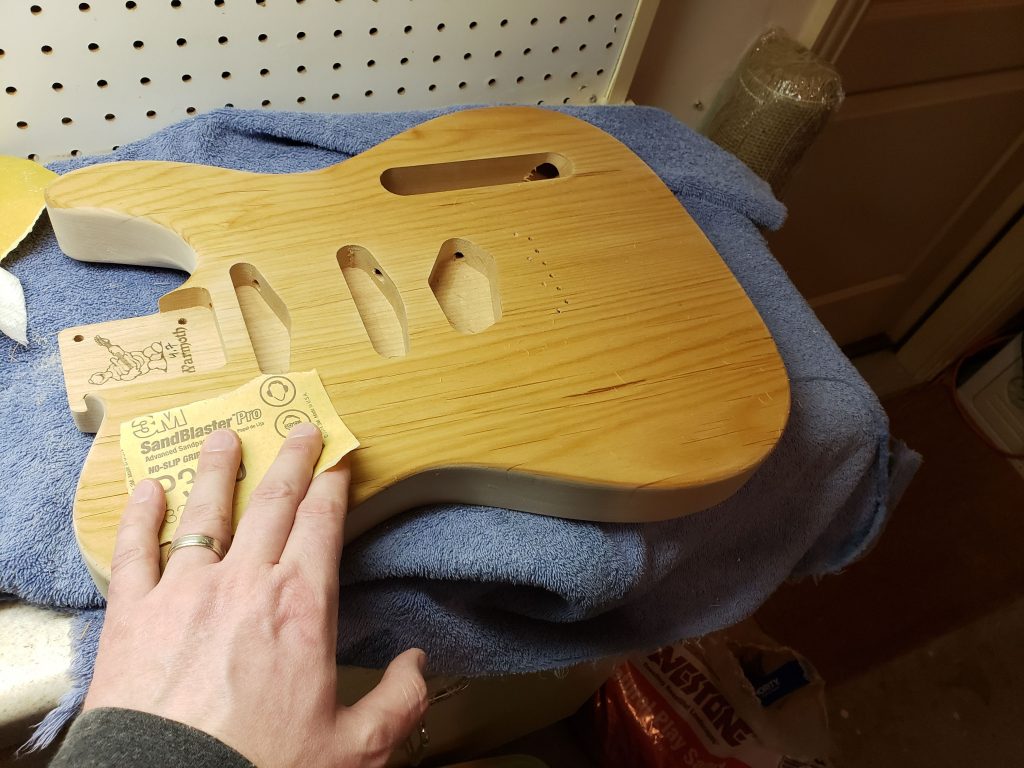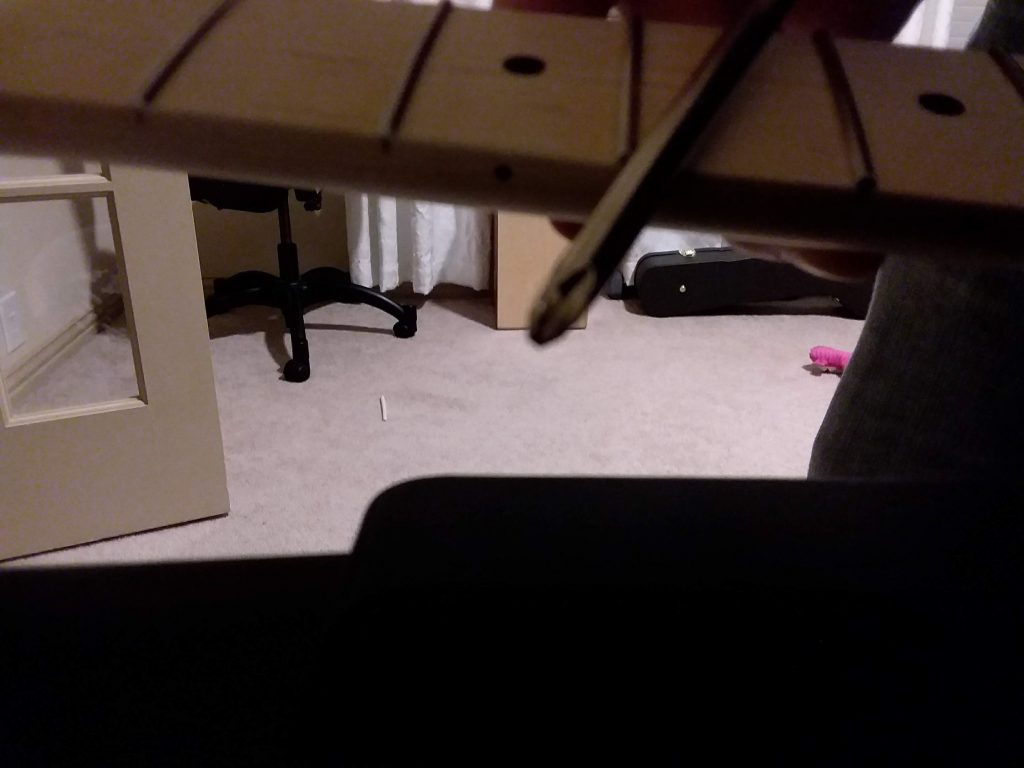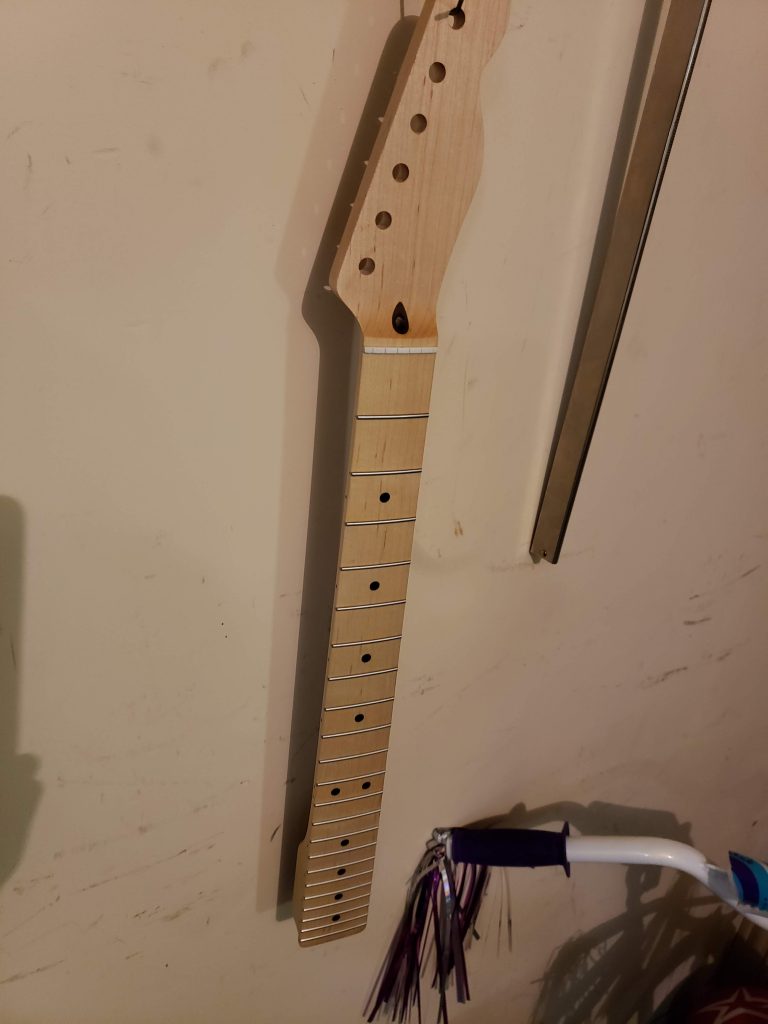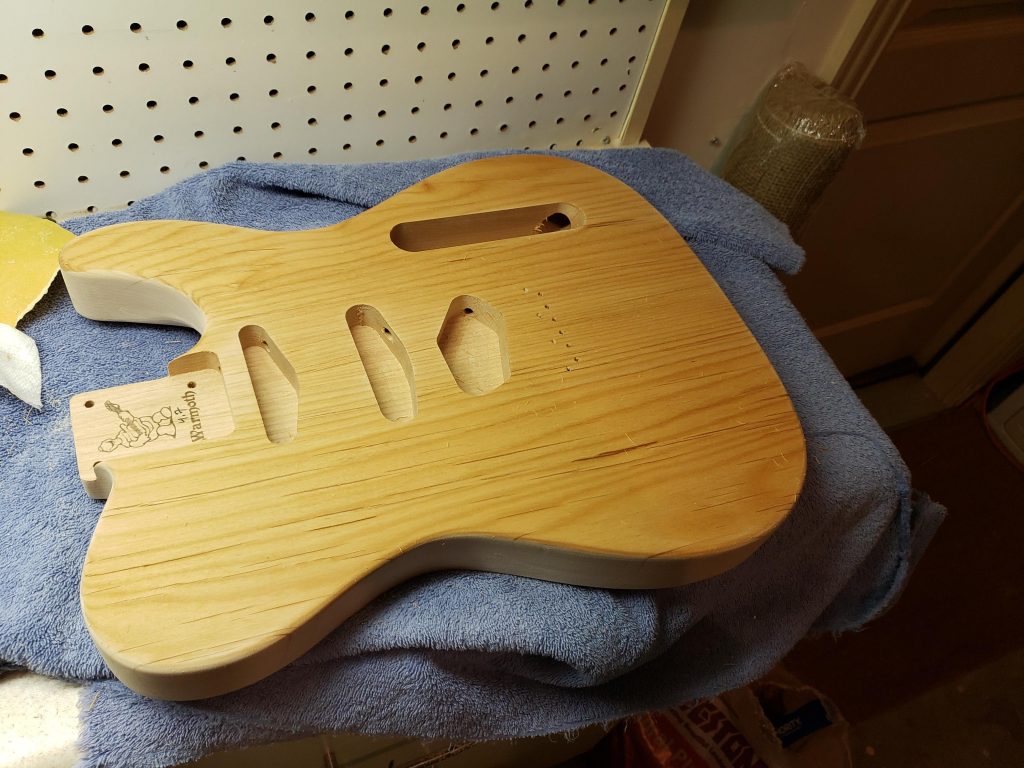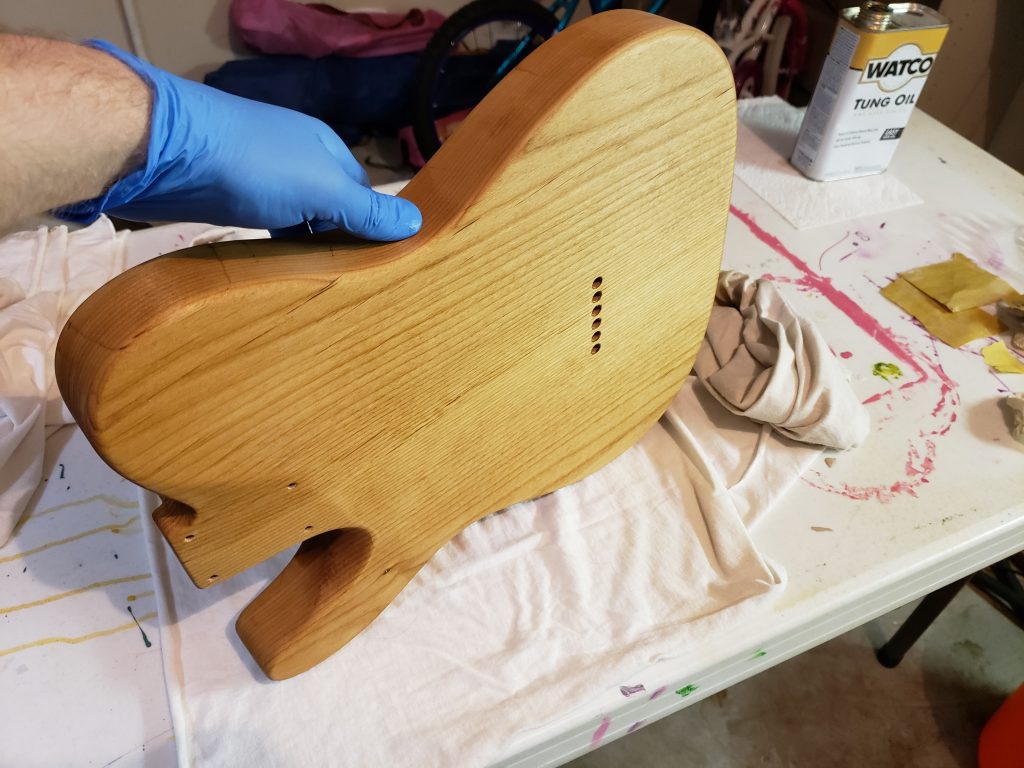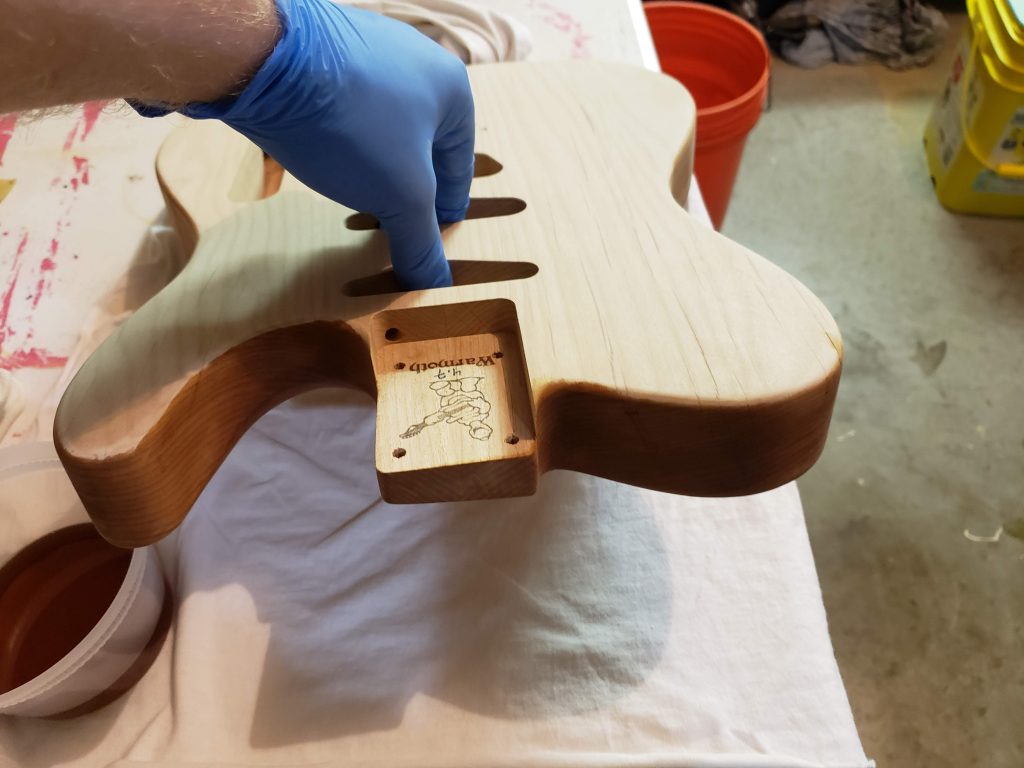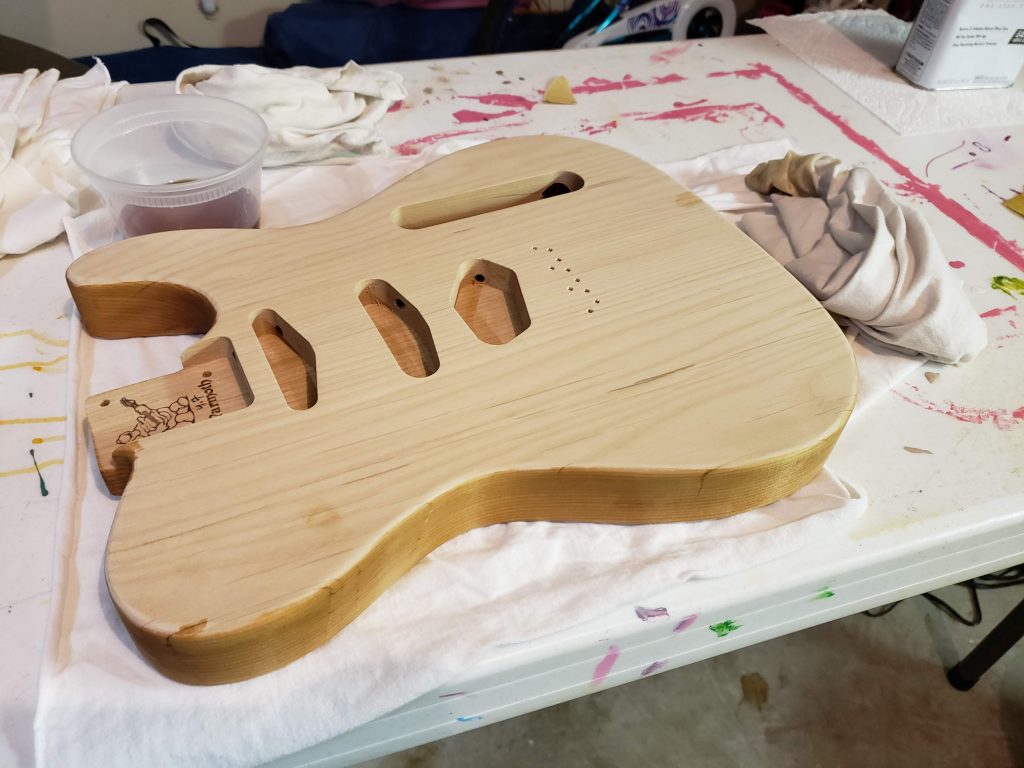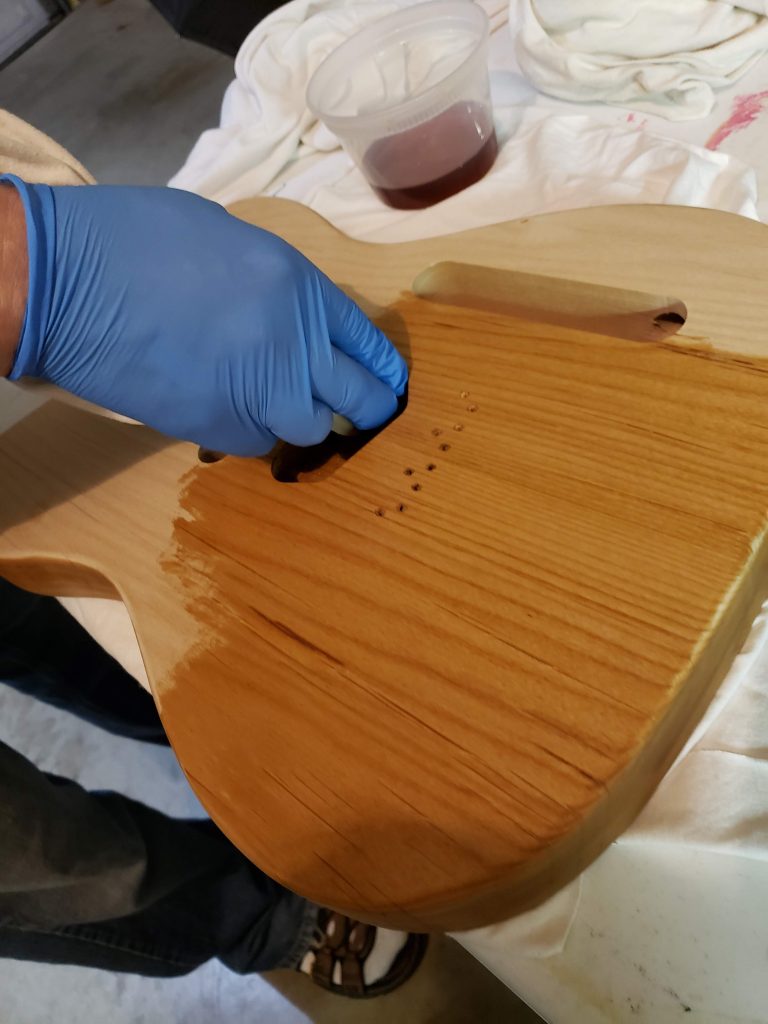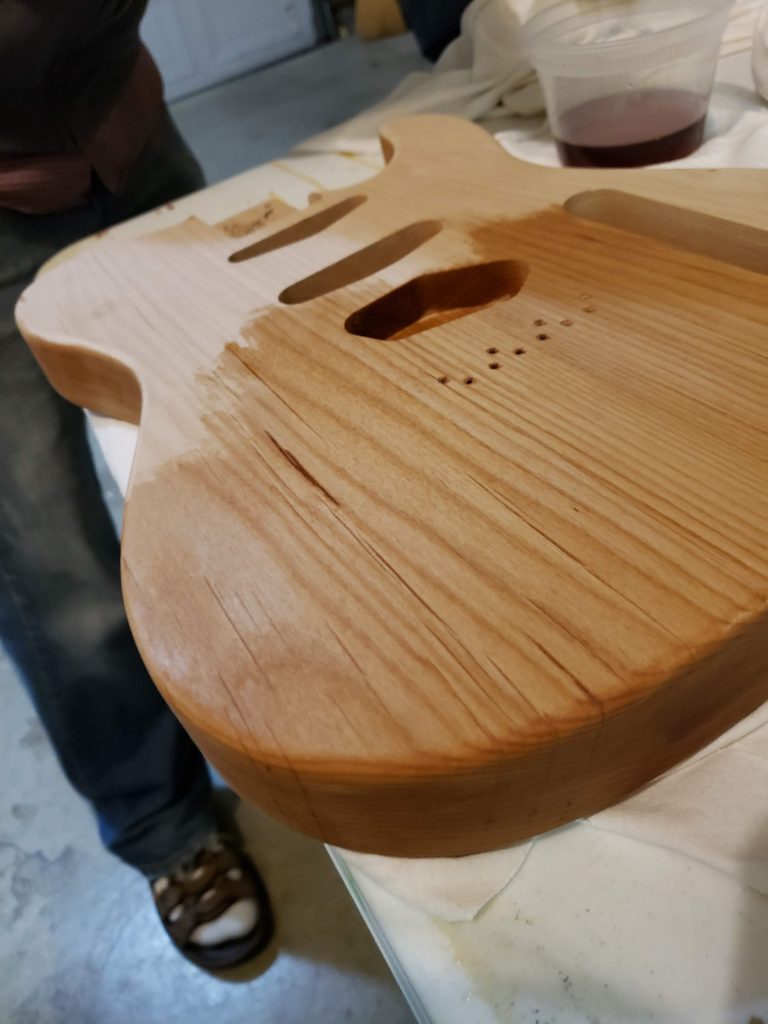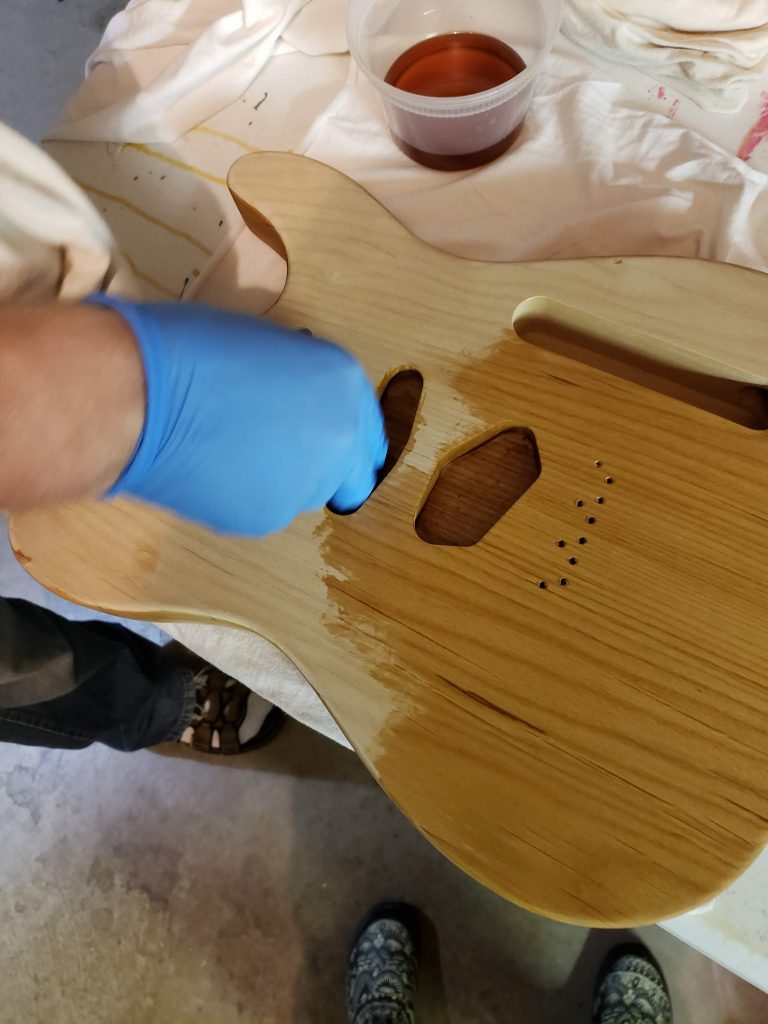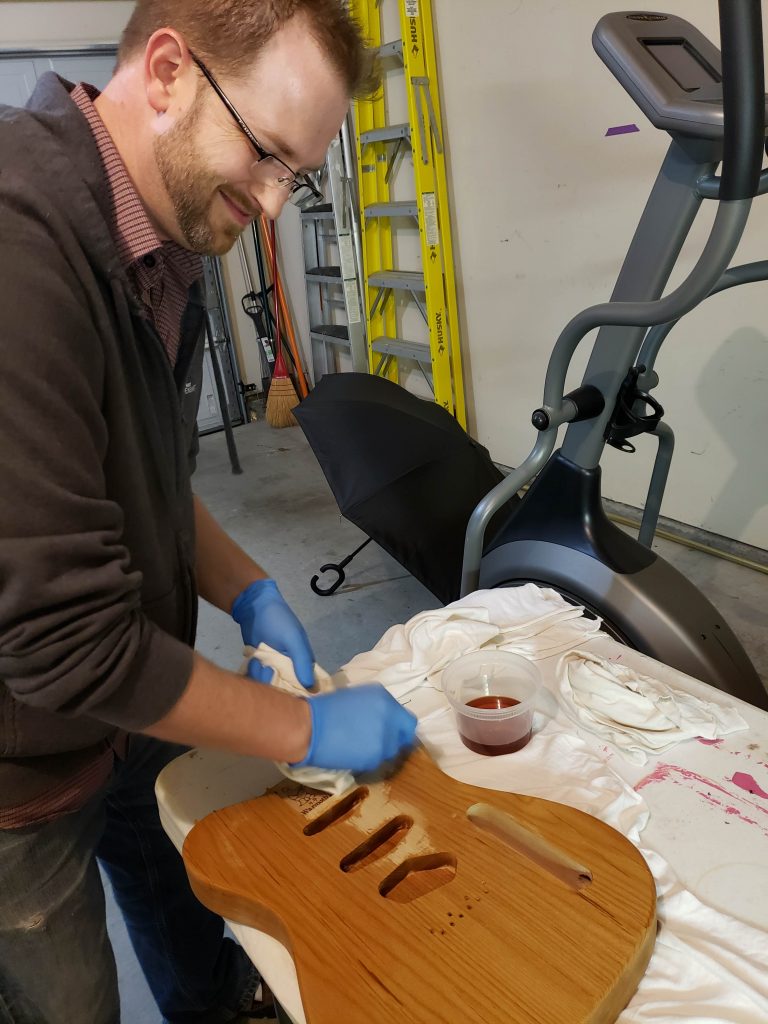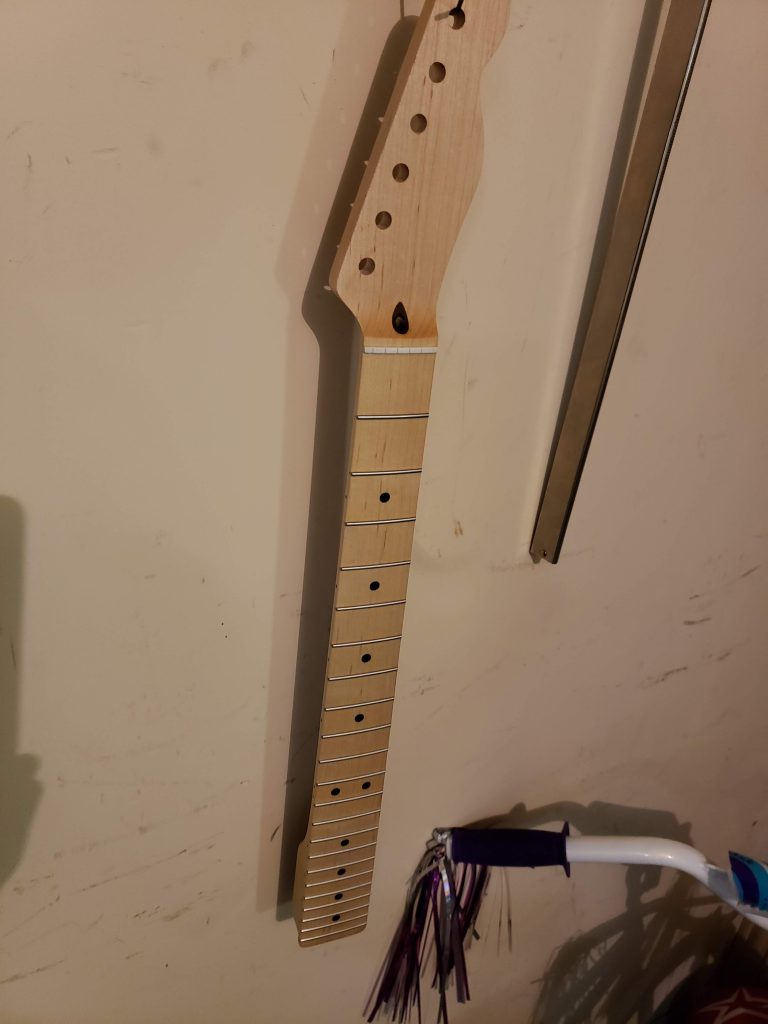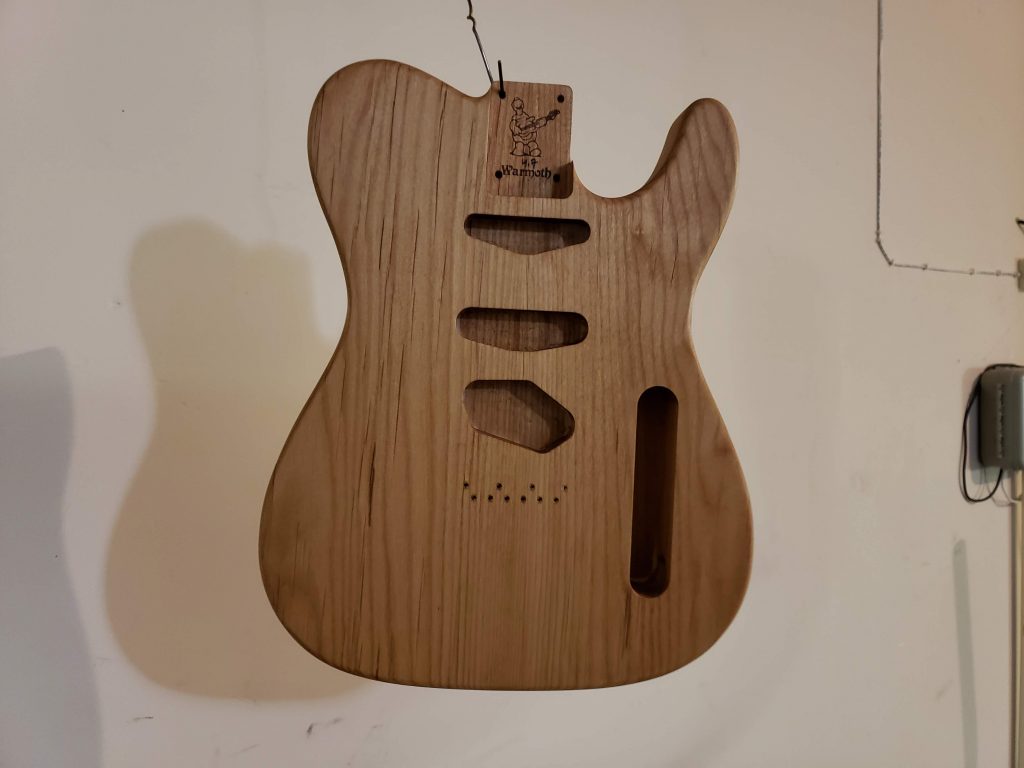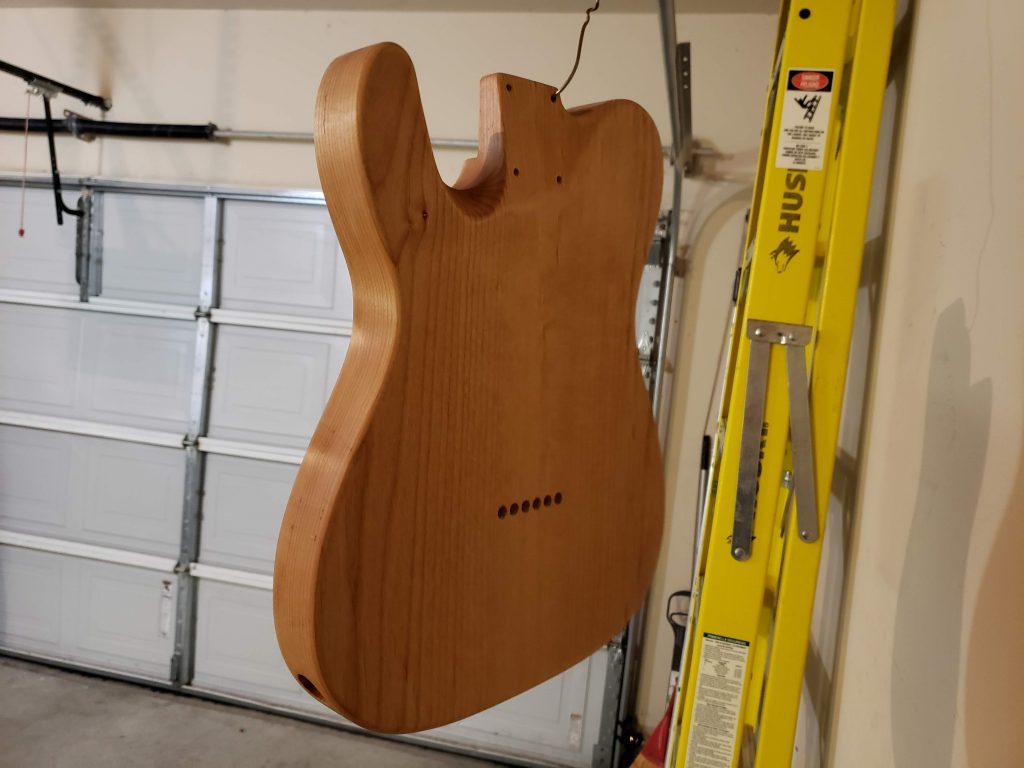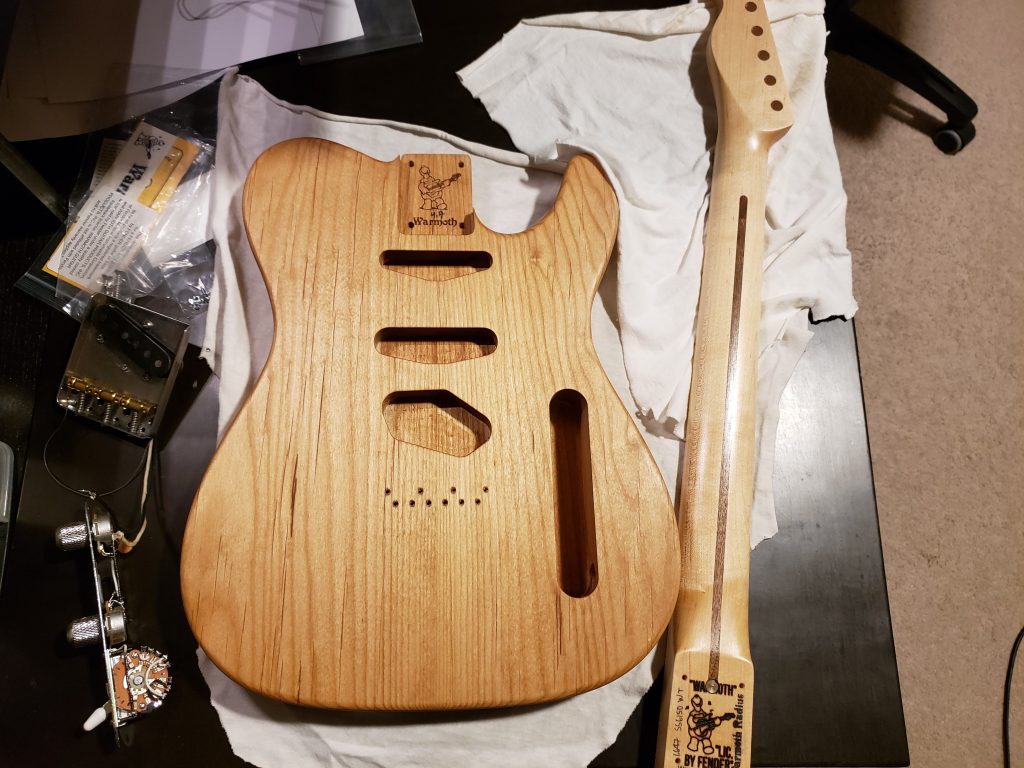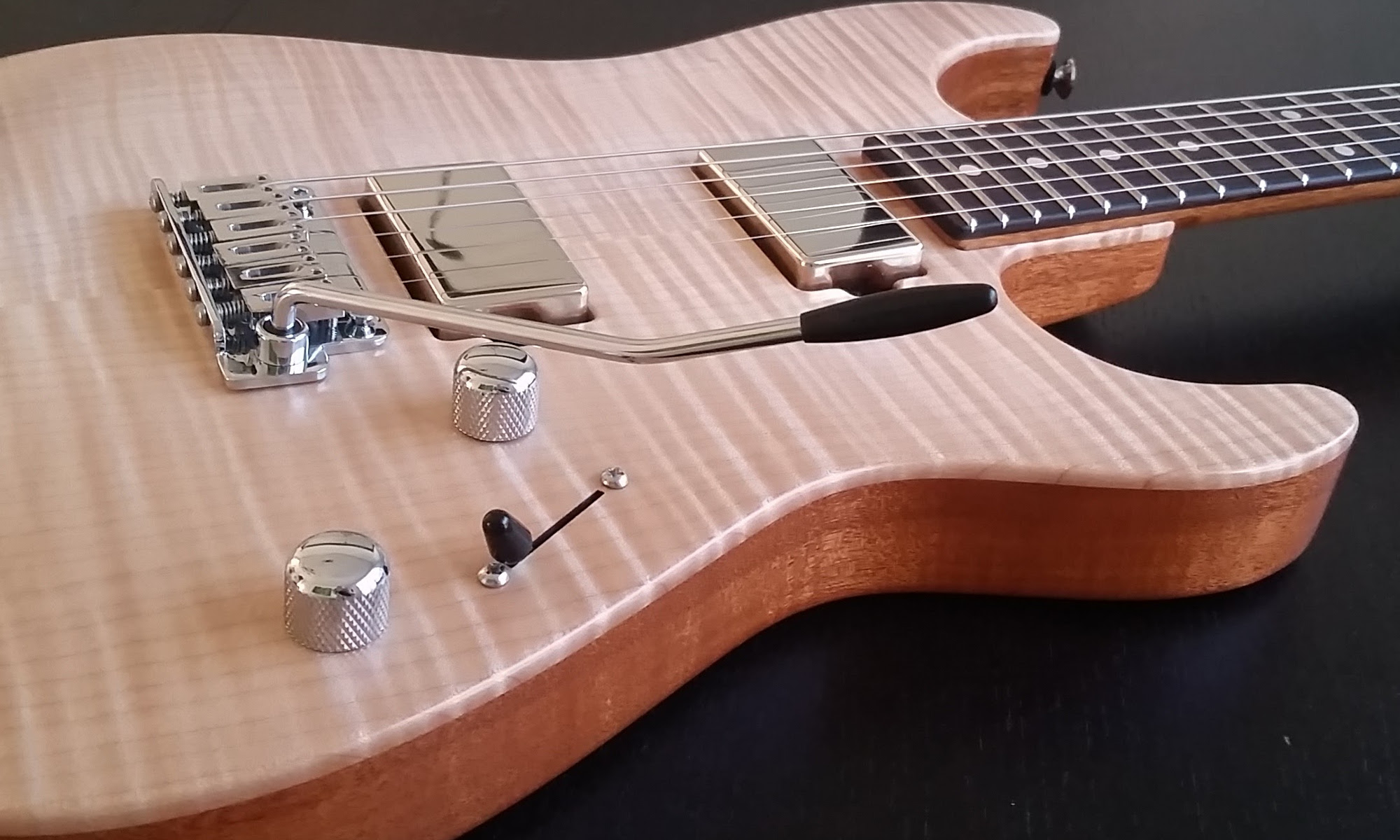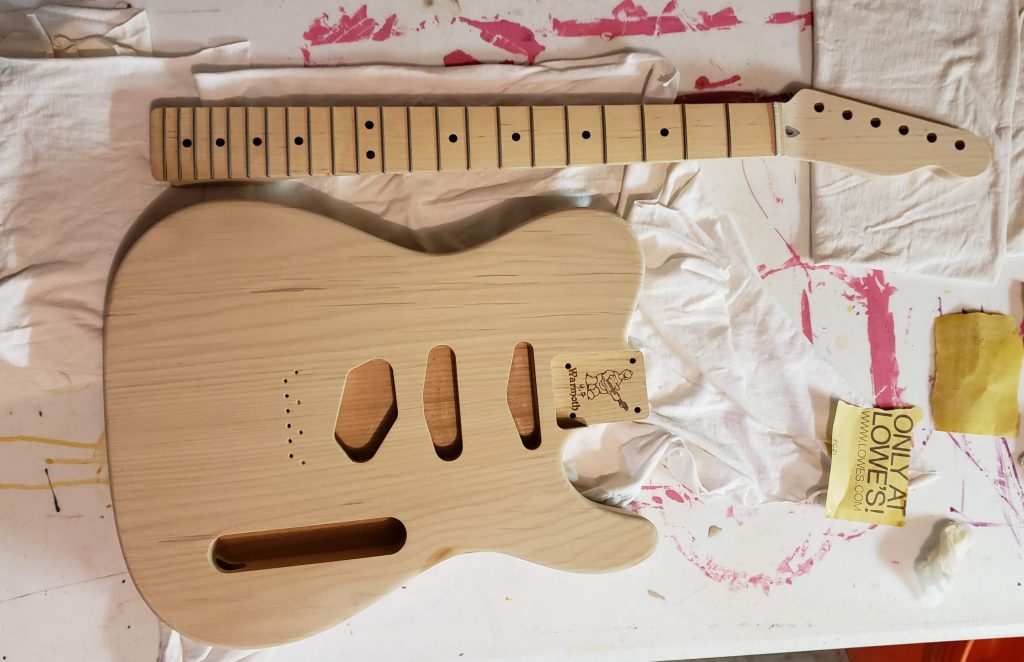
I’m a huge fan of the legacy of a company from the 90’s called Stephen’s Stringed Instruments. Stephen Davies and team created some really unique guitars and they are becoming increasingly difficult to come across these days. The old website is still up and I love reading the specs page. I really like his comments around finishes and this meshes well with my experiences.
My last guitar came out a darker brown than a lot of the Stephen’s instruments I’ve seen online. While I don’t mind how it looks I reached out to both Stephen Davies and Richard Weikum, who did a lot of the finishes at Stephens, to see what kind of tung oil they used. Both of them were kind enough to respond. Stephen said, “We used a tung oil from a local large finishes wholesaler, but as far as I know tung oil is tung oil. We didn’t cut it.” Richard thought it was simply the piece of wood I was using that was determining the color, as it was “more brownish”. He recommended using Watco tung oil and said he had good luck repairing N4s w/ that.


Here’s a picture of a Davies N4 Richard refinished w/ Watco tung oil. The man does amazing work. Check him out here
